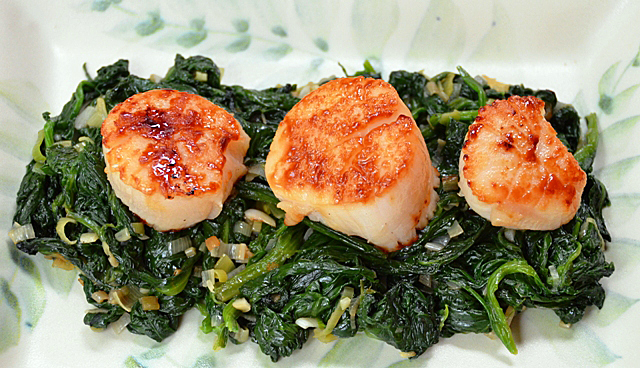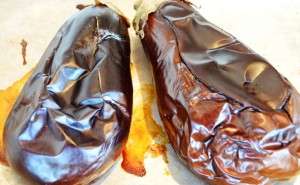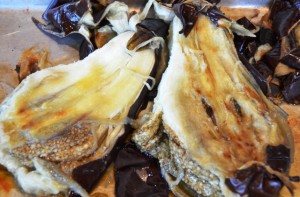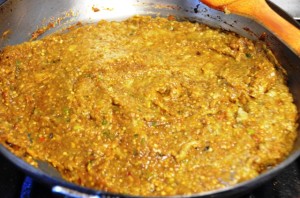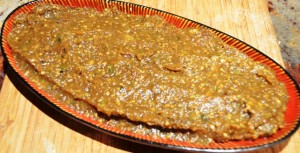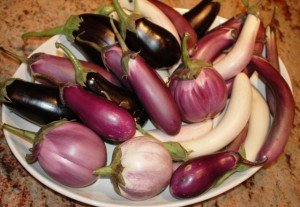Scallops were a perennial favorite on my catering menu . Whether served wrapped in smoky bacon and served with a dill horseradish mayonnaise, or as a scallop puff on a crostini accented with dill and lemon, they were quick to disappear from the hors d’oeurve tray. I learned early in my days as a caterer the importance of having a reputable seafood merchant. I knew of instances where the smaller sweeter (and more expensive) bay scallops were actually punched out of larger sea scallops. Other “scallops” were not scallops at all but were cut out of shark steaks.
True scallops are sold in two different ways, wet or dry. Dry scallops have not been treated with water or chemicals, which gives them a shorter shelf life. They will range in color from vanilla to almost a peachy color and have a sweet briny aroma. Wet scallops have been treated with a sodium phosphate solution that helps the scallops retain water for a longer period of time. It also gives them an unnatural uniformly white color. The phosphate in the solution is an additive that is used in soap products. So when a wet scallop is cooked it leaches a milky, slightly soapy solution. When you are at the seafood counter it is always best to ask if the scallops are wet or dry, and if they aren’t sure, run, don’t walk away from that store!
In the past ten years the addition of seared scallops became a part of my catering repetoire and is still my favorite way to prepare them now. Wet scallops will not work for this preparation because of the excessive water they exude. Before you cook scallops detach the tough adductor muscle, it peels off very easily. High heat is the best way to cook scallops and be sure they are as dry as possible. The outside of the scallop will have a beautiful caramelized crust while the inside is creamy soft, not tough. I chose to serve it this evening on a bed of our fresh garden spinach.
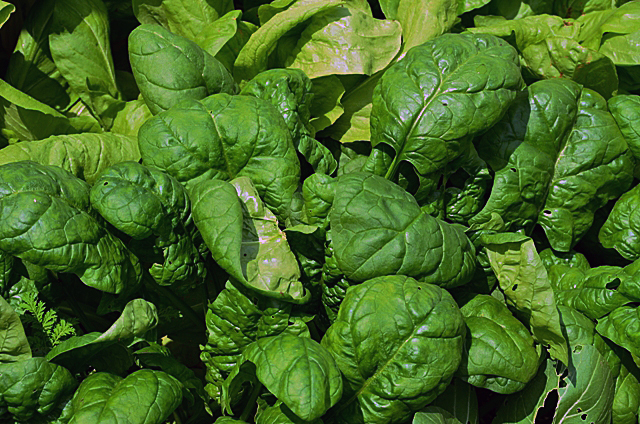
Seared Scallops with Spinach
Serves 2-3
Ingredients
- 8 to 10 cups well washed spinach
- 2 small leeks, chopped finely
- 2 cloves garlic, chopped
- 3/4 to 1 lb fresh dry scallops purchased from a reputable seafood dealer
- Cooking oil that tolerates high temperature cooking-canola, grapeseed etc.
- 1T butter and 1T olive oil
- 6-8 cups well washed fresh spinach
Directions
- Clean the spinach by filling your sink with cold water. Soak the spinach to remove dirt and sand. The dirt and sand will sink to the bottom and the spinach will float to the top. Remove spinach to a colander while you drain the sink and clean out any dirt. Repeat the soaking process several times, cut off any large stems and spin in salad spinner to remove excess water. Set aside.
- Pat scallops as dry as possible with paper towel or clean dishcloth
- Season well with Kosher salt and fresh ground pepper, if you are fussy, then it should be white pepper
- Heat oil over medium-high heat in a large non-stick pan that will hold all the scallops comfortably. Sometimes I use a brush to be certain the whole pan is coated. Be sure the pan is hot before adding scallops, a drop of water should bead up on contact.
- Add scallops, flat side down and cook undisturbed for several minutes, the length of cooking will depend on the size of the scallop, 2-4 minutes per side is a good guideline. Flip scallops and brown on the other side. they will still be somewhat firm to the touch. Transfer scallops to a platter and keep warm.
- Wipe residue out of pan, return to medium high heat. When pan is warm, add butter and oil.
- Add chopped leek and garlic to the melted butter and oil. Saute until leek is softened but not browned. Add spinach by the handfuls and saute until the spinach is cooked down.
